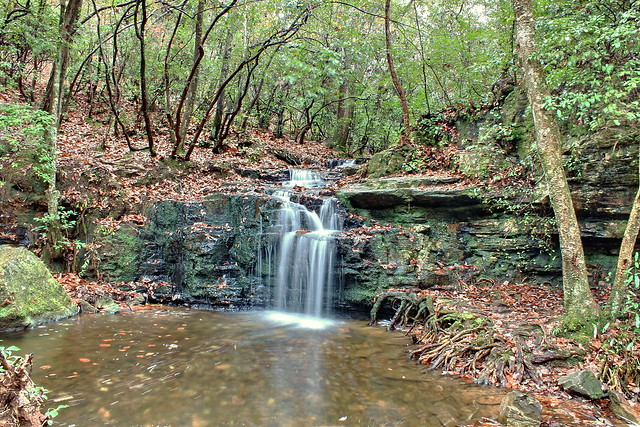In the 1800s there was an art movement called the Hudson River School, this movement included artists like Albert Beirstadt, Thomas Cole, Samuel Colman, and Robert Duncanson among others. These men painted landscape of the Hudson River Valley, the Catskills, Niagara Falls, and the Oxbow , which was then recreated by Ansel Adams.




The influence of the Hudson River School was carried into the mid-19th century by artists like John Frederick Kensett and Martin Johnson Heade, who came to be known as Luminists because of their experiments with the effects of light on water and sky, and by Frederic Edwin Church. Church, who based himself in his panoramic home in the Catskills at Olana, sought more extensive horizons for his canvasses. Like Walt Whitman he tried to contain multitudes. This movement was then brought into our own century by Thomas Kinkade who is famously known for working with Disney.
Why does this movement matter?
It represents “a great hopefulness and a wistful remnicience of the American experiment, a celebration of the primeival American landscape, the entrance of technology into that landscape, and eventually sorrow at its passing, to both a belief in a Provinically ordained destiny and the crisis of the Civil War” (Hogan). During the 1800s there was the introduction of several new inventions and the boom of the Industrial Revolution shortly after a completely different boom, The Civil War. With this movement the painters set out to establish a romanticism and aesthetically appealing Hudson Valley that was slowly but surely being demolished in favor of towns, cities, and buildings. The wilderness for quite some time has had this illusion of being mysterious, containing awful beasts and savages, yet there is also this lust of returning to nature and our natural state of living off the land. This side of nature is hauntingly beautiful and possibly godlike or even Eden-like. These men set out to portray this side of nature.
This Eden-like ideal can most definitely be seen in Kindred Spirits in which the founding figure of the Hudson River School and William Cullen Bryant are depicted as surveying the scenery of the Catskill Mountains. However, this depiction of the Catskills is unlikely depending upon where this was supposed to be, if it is the area surrounding Route 17 in New York then yes it is highly likely to have a view that looks like this, but if it is a view that is along the Hudson River then that view would be filled with steam ships and other boats carrying cargo to and from bustling New York City.
Did this Influence Teddy Roosevelt?
Teddy Roosevelt is known for his love of nature, even though he was a big game huntsman, and for his political gains in Panama, but would this movement influence his decision to create National Parks? Yes and no, he was most likely aware of Thoreau, the Hudson River School, and the art movement, but it was after a big game hunting trip to North Dakota that influenced him to conserve the wilderness. “Whenever he managed to spend time in the badlands, he became more and more alarmed by the damage that was being done to the land and its wildlife. He witnessed the virtual destruction of some big game species, such as bison and bighorn sheep. Overgrazing destroyed the grasslands and with them the habitats for small mammals and songbirds” (“Theodore Roosevelt National Park”). He also realized that the bison herd and the bid horn sheep herds had been decreased in such large numbers that their populations were scarce.
 “It is also vandalism wantonly to destroy or to permit the destruction of what is beautiful in nature,
“It is also vandalism wantonly to destroy or to permit the destruction of what is beautiful in nature,
whether it be a cliff, a forest, or a species of mammal or bird. Here in the United States we turn our rivers and streams into sewers and dumping-grounds, we pollute the air, we destroy forests, and exterminate fishes, birds and mammals — not to speak of vulgarizing charming landscapes with hideous advertisements. But at last it looks as if our people were awakening.”- Theodore Roosevelt
Thoreau, Hudson River School, and Transcendentalism
“Thoreau, as with the Hudson River School, invites us to find a sense of meaning, of direction and purpose in life through immediate contact with the living creatures, the vicissitudes of the seasons, and the varied textures of the earth” (Oelschlaeger). They both contain the ideal that the wilderness, as mentioned before, is a beautiful place for one to retreat to, to explore, and to enjoy. There was also a wide-held belief among Thoreau and possibly even the members of the Hudson River School called transcendentalism and one of their core beliefs is that there is an inherent goodness in both people and nature. This inherent goodness only adds to the belief that nature is godlike in its untouched state of being, but how can nature be considered untouched when it is an escape for man to go to? It is untouched because it has not been changed by the human hand nor has the landscape, but can this be possible in a time when national parks exist?
National Parks Today


The National Parks were created by Teddy Roosevelt as place of conservation of nature that were also meant to be a place of enjoyment for the American people. The National Park have since changed since their creation in 1902, playgrounds have been added, roads have been paved, cabins have been established upon them, sidewalks and trails have been added, bridges have been built- so the nature of the park has been touched by the human hand, but there is still nature to be seen within these parks. Animals and plants still live and thrive there and their populations seem to have gone unchanged and possibly have boomed thanks to their protection. The roads, cabins, sidewalks, and even stairs were put there during the Great Depression by hard working men and women who needed jobs and the parks needed people to take care of them. The parks needed people to take care of them so they would not become like wild untamed gardens or jungles and the men and women needed stable jobs while the economy bounced back to its own ‘natural’ state. The two helped each other in a symbiotic relationship of sorts and many of those walls, sidewalks, roads, cabins, etc are still standing today. Although nature was touched and edited by human hands it is still seen as beautiful and an escape to go to, a place for people to view nature in a somewhat natural state of being.
Was not this the idea from the start: to enjoy nature, soak in her beauty, gaze at her and know what it is like to see God’s own hand at work? Yes, that was the whole frame of mind from the viewpoint of the Hudson River School. This wilderness may have been tamed, but it has not been tarnished. Central Park herself was created by the hand of man, Frederick Law Olmsted and Calvert Vaux to be exact, yet people go to Central Park to gaze at, take pictures of it, and some people specifically go to New York City to see this grand park built within the confines of the harsh industrial complex and confines of the city. Aye there is the rub- how can one enjoy nature in her wild state, yet revel in nature that has been created by man?
Work Cited:
Hogan, Kathleen M. “Introduction.” American Studies at the University of Virginia. University of Virginia, 1 Jan. 1998. Web. 18 Feb. 2015. <http://xroads.virginia.edu/~hyper/DETOC/hudson/intro.html>.
Oelschlaeger, Max. “Emerson, Thoreau, and the Hudson River School.” Nature Transformed, TeacherServe©. National Humanities Center. 19 Feb, 2015. <http://nationalhumanitiescenter.org/tserve/nattrans/ntwilderness/essays/preserva.htm>
“Theodore Roosevelt National Park.” National Park Foundation. NATIONAL PARK FOUNDATION. Web. 20 Feb. 2015. <http://www.nationalparks.org/explore-parks/theodore-roosevelt-national-park>.






